

Suunto Blog
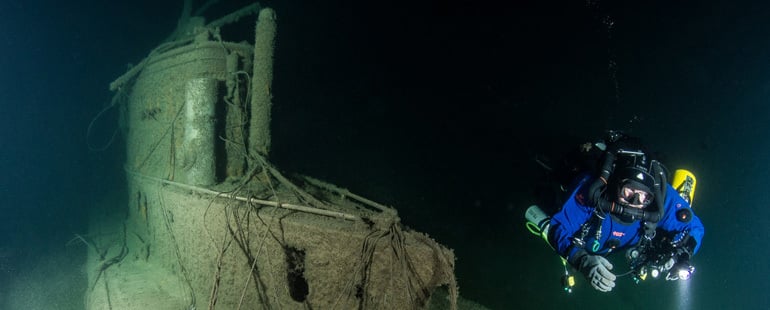
The amazing discovery of U 26
This is the full, incredible story of how Finnish diving group Badewanne discovered the wreck of first world war German submarine U 26. In their own words, the group's Juha Flinkman tells the story:
Late May in Gulf of Finland, weather is perfect with slight seas and some overcast, but good visibility. We’re kitting up to dive in one of the Europe’s busiest sea lanes. Ships of all sizes and shapes steam buy westbound along the lane leading out of the Gulf to the Baltic Proper. And where we’re diving is right at the bend, where every skipper wants to cut the corner as close as possible to save time and precious fuel. Subsequently, with the kind help of Helsinki Traffic Control, we have received a special permit to dive the site. Traffic control directs all ships approaching the site to pass us, and informs them of our intentions. Hence the VHF is constantly blaring instructions to approaching traffic, approximately one ship every 10 minutes!What lies on the seabed that could be so worthwhile to dive to, that would warrant such grandiose operation? Well no other than U 26, one of the first “Ace” boats in the First World War, and certainly the most successful submarine operating in the Baltic during the entire conflict. The U 26, under command of Kapitänleutnant Egewolff Freiherr von Berckheim, sank Imperial Russian Navy armored cruiser Pallada in October 1914, during the first months of the war. This made von Berckheim one of the first “Aces” of the emerging Ubootswaffe branch in the Kaiser Navy.
Von Berckheim and his entire crew received the Iron Cross from the enthusiastic Kaiser for their efforts, and in late summer 1915 they returned to Gulf of Finland with their trusty mount U 26, to wreak havoc among Russian shipping. This they did with good success, until late in August the luck that carried them through their dashing exploits ran out. Russian Navy had for a long time been very annoyed with the success of German U boats in the Gulf, and in order to stop this, had ordered minelayer Ladoga to lay a barrage across the mouth of the Gulf. However, U 26 was already inside the barrage, trying to get back to its base after a successful patrol. What happened, and when, we will never know, but U 26 hit one of Ladoga’s mines and sank with all 30 hands.A couple of weeks earlier, while running a side scan sonar sweep along the line of barrage laid by Ladoga, Immi Wallin observed a submarine wreck forming on the screen. Subsequent sweeps revealed that the boat is old, and most probably German, so the practical possibilities were U 10 or U 26. Soon we would find out!JJ-CCR’s strapped to our backs, bailouts and deco tanks snapped to place, fins on. Immi manouvers Yoldia right by the buoy and we go over the side. The water is rather clear even on the surface, but whatever waits at the bottom we have no idea. However, now as we descend the shotline it gets clearer and clearer as our lights probe the darkness. And suddenly she’s there! Visibility is absolutely brilliant all the way to bottom, which seems to be glacial clay. The shot weight hasn’t touched the wreck, but lies almost two meters to the side. Closer inspection reveals that the sediment is saturated with oil that has seeped from U 26’s tanks during her 99 years stay at the seabed. We swim towards the stern, which has sank deep into sediment as we could already see from side scan images.
The deck casing is visible maybe 10 meters behind the conning tower before disappearing into the clay. Broad, flat-topped saddle tanks typical to the U-23 class appear from the clay and run along the sides of the hull. On top of starboard side tanks we can see the collapsible radio aereal masts with their raising/lowering mechanisms. There is some trawl wrapped around the bows and conning tower, and only apparent damage to the boat seems to have come from the trawl: conning tower railings have been twisted and ripped off, and the ship's wheel which has stood on the open bridge, has been torn away by the trawl, and by an insane twist of fate has ended up in a space behind a ripped off hatch on the starboard side of the conning tower. There the wheel rests, still wrapped in trawl netting. Most importantly, the conning tower layout is definitely class U-23, so it seems we really are looking at U 26. But we need to check further.As we approach the bows, we can clearly see the for’ard diving planes, which are distinctly located low on the hull, well below water line when surfaced. This detail excludes U 10, which has these diving planes located above waterline. Everything else also matches what we know of the U 26: torpedo tubes, their outer hatches, bow shape.
We can now be sure we’re looking at the elusive U 26, one of the most sought after wrecks in the Baltic. Here she is, resting on the seabed with her crew and Kaleu’nt von Berckheim. An even 100 years after she was commissioned to the Kaiser Fleet, and 99 years after she last reported in. I have heard somewhere that old submariners don’t consider the boats that never returned from patrol as “lost”, but refer to them as “still on patrol”. Well, here she is, resting on the Gulf seabed, proud and alone as she was when she still patrolled these waters. A touching memorial to fates of war: brief success followed by swift and inevitable death. We swim silently along the side towards our shotline, our RB’s not breaking the silence of almost a century.As we can now be sure we have the U 26, we call the dive at runtime minute 17, and start our ascent along the shotline. Deco stops tick by, and eventually we surface. Yoldia is ready and picks us up quickly. It’s only after we are seated, and remove the loop from our mouths, that the whooping starts. Yes, it’s the twenty-six! And yes, the viz is bloody excellent! As the whoops echo around the deck of Yoldia, the next crew is preparing to dive, this time to shoot video. We quickly brief them with Jouni, and then they disappear over the side. Well folks, just another day at the Gulf of Finland, the Definite Wreck Paradise of the World.
Images ©Badewanne
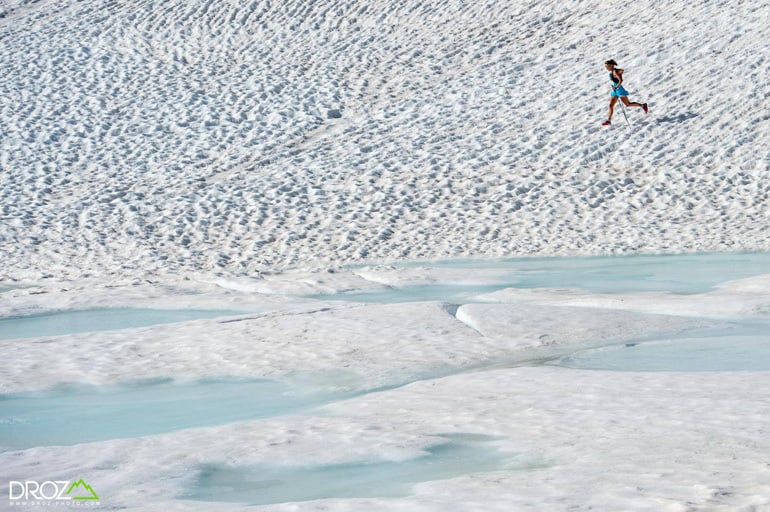
Why Emelie Forsberg loves to run
Emelie Forsberg has just taken a stunning victory in the Mont Blanc marathon 80km race. But it's not her epic win she's talking about – nor the fact it means she's now the 2014 Skyrunning Ultra champion.
Take a look at her Facebook page and you'll see it's her love of running and her passion for the mountains that comes across. “From my heart I can truly say I enjoyed every second of it,” she writes. “Pure skyrunning. J´adore! I love!”Before the race, we asked her exactly why she loves to run. Her answer is both refreshing and inspiring: “It's hard to describe it's so good,” she says. “You get a really good feeling in your legs. You feel so light – you're just flowing over the ground. Every uphill is super easy. Maybe you reach the summit and you just want to go further. Everything is connected. You feel like really wow, I could go on forever, or wow, what a great feeling, this is so beautiful.” “You can still get a great run even when it's also a rainy day and you have to really push yourself to go out the door,” she adds. “You're always super happy you got out there.”For Emelie, running is all about pleasure. “It is never difficult or hard!” she says, although she admits that it can get tough in a race. As for what she thinks about for all those hours on the trail, she says she tries to cultivate a state of 'mindfulness'. “If I have things that I think about, I make a list but when I have done that I'm less in my mind. With mindfulness you don't think about anything. You are just there – and nothing more.” Image ©DROZ PHOTO
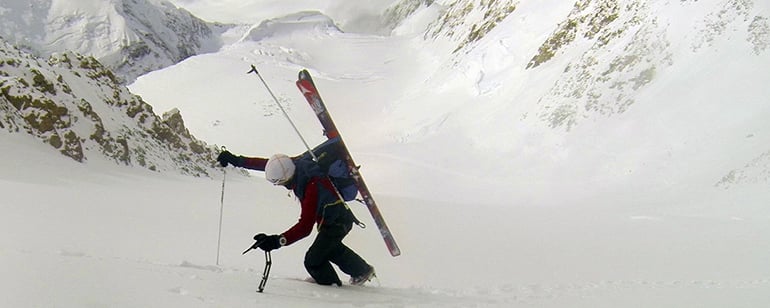
Kilian's record ascent of Denali
When Kilian Jornet goes to the mountains on a personal project you can be sure the results will be interesting.
The mountain athlete does not disappoint. He's just returned from Denali, 6,194 m, the highest mountain in North America and sure enough, he's come back with a record – and an epic story to tell.
Avoiding the more popular West Rib route, Jornet headed up Rescue Gully on skis in his usual super fast style. By the time he returned exactly 11h and 48m later he'd smashed the record for the mountain's fastest ascent – by over five hours. The round trip involves an elevation gain of over 4,700 m and a distance of over 53 km.
What makes the ascent even more noteworthy is that conditions were bad for much of the ascent. Out of 16 days on the mountain, only three were good while blizzards, fog and low temperatures were the norm.
When Kilian set off on the summit bid, the thermometer was at -20ºC and the wind was gusting 40km/h.
“It has been a great adventure,” Kilian says. “Weather conditions were bad during much of the route. Yet, I managed to break the record, so I'm very satisfied. I took a different route rather than the usual one to avoid a stretch with fixed ropes because I wanted to stick to the values underlying the project – that is, attempting the record using as little equipment as possible, and without help.”
“I had to face two tough factors,” he adds. “On the one hand, the cold and the wind, which slowed me down throughout the route. On the other hand, the altitude, which affected me substantially from 5,000m.”
The summit was a special moment, he says, but not because of the view. “There was fog and I couldn't see a thing! But I thought ‘now my legs will finally stop hurting’!”
Denali, which is also known as McKinley, is one of the most forbidding peaks in the world. Although not as high as the Himalayan mountains, the Alaskan peak is notorious for its cold and brutal weather thanks to its proximity to the Arctic Circle. And with 4,000m of difference from base to summit, it features more vertical ascent than most mountains. Measured by topographic prominence it's the world's third most prominent peak after Everest and Aconcagua.
Image © Summits of My Life
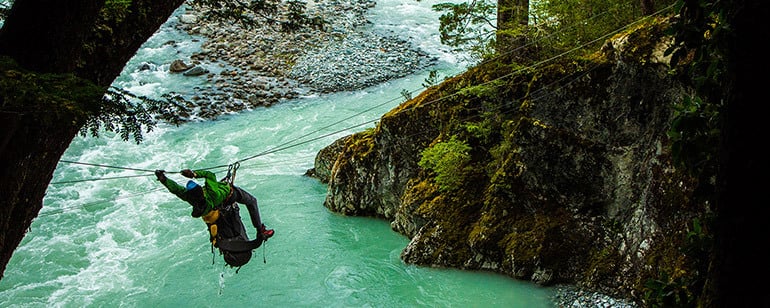
The Lost Valley
Where does a journey begin and end? Off the grid in Patagonia the stakes are high. Consequence and weather are constant travel companions on the way to sending La Vuelta de los Condores (5.11 A2). Watch as Arc’teryx Athletes Will Stanhope, Paul McSorley, and Marc-Andre Leclerc, along with Matt van Beine, set off to climb in the remote reaches of northern Patagonia.
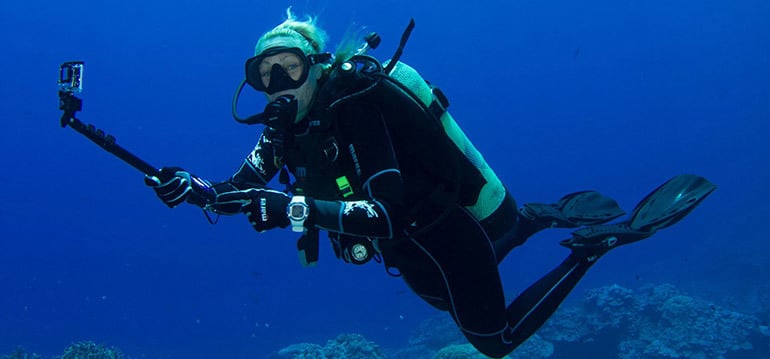
Dive like a Scuba Diver Girl
You’ve seen the diving videos of the Scuba Diver Girls and now you’re wondering how to get started with your own adventures. Margo Sanchez, president of the team, shares their secrets.
“It’s what everyone asks,” says Margo Sanchez when discussing the girls' many adventures. Along with her sister-in-law Stephanie Adamson, Sanchez formed what is perhaps the most-watched team of female divers in the world, with large followings on Facebook and beyond.
Whether it's advice for the newly certified diver about meeting more local dive buddies or suggestions for the veteran divers about their next exotic scuba trip, Sanchez suggests utilizing local resources.
Dive shops are always a good hook-up. “Look for your local Suunto dealer dive centers,” says Sanchez. “They're usually a great starting point for training, equipment as well as adventure and travel.” She adds that dive clubs are another fantastic resource for organized dive trips, group events and making new friends. Meetup.com is also a popular online resource used by many divers to find and join local dive clubs.
“Most importantly, local dive clubs, groups and shops are all good for one thing – meeting buddies who share a passion for the same sport and are excited to experience the next adventure,” says Sanchez.
Images © Brad Holland and Jennah Caster
Emelie Forsberg's illustrated 2014 goals!
There are some athletes who have printed spreadsheets and detailed training schedules mapped out months in advance. Then there are athletes like Emelie Forsberg, who's more a 'back-of-an-envelope' kind of a girl. She trains on feeling and goes for races for the experience as much as the competition.
Emelie's 2014 ambitions are suprisingly modest: “I just want to keep it together – that's an important goal,” she says.
“To realise your limits and what you can do and not push yourself too hard – that is always going to be my biggest goal. It's a big goal, maybe not that interesting but that's who I am.”
That's not to say she doesn't have some big plans for the year. But we'll let her artwork do the talking...














































































